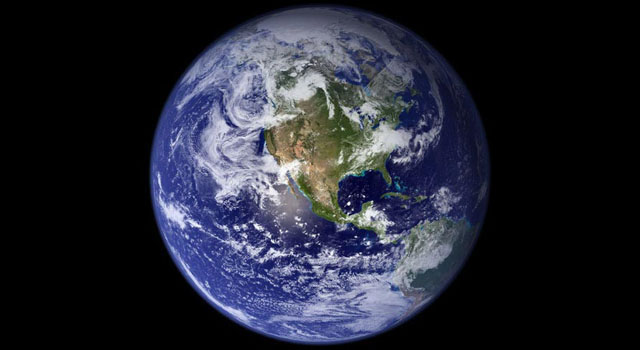Wobbly Earth Means Your Horoscope Is Wrong

If you look to your horoscope for a preview of your day, look again: You're probably following somebody else's supposed fate.
Thanks to Earth's wobble, astrological signs are, well, bunk. (Or even more bunk than you might expect.) Astrological signs are determined by the position of the sun relative to certain constellations on a person's day of birth. The problem is, the positions were determined more than 2,000 years ago. Nowadays, the stars have shifted in the night sky so much that horoscope signs are nearly a month off. [Read: Why Your Horoscope for 2011 Is All Wrong]
"Astrology tells us that the sun is in one position, whereas astronomy tells us it's in another position," said Joe Rao, SPACE.com's skywatching columnist and a lecturer at New York's Hayden Planetarium.
The shift is caused by precession, the wobble in the Earth's axis caused by the gravitational attraction of the moon to the Earth's equator. Precession popped into the spotlight this week after Minnesota Planetarium Society board member Parke Kunkle told the Minneapolis Star-Tribune about the gap between the astrological and the astronomical view. The story spread around the Internet quickly, but it's actually old news, Rao said.
Very old news.
"The earliest known astronomer to recognize and assess the movement of precession was Aristarchus of Samos, who lived around 280 B.C.," Rao told LiveScience.
The attention triggered by his interview with the newspaper has been "astounding." Kunkle, who teaches astronomy at Minneapolis Community and Technical College, told Livescience, He gave the interview at the request of the paper to discuss precession, and the science he described is centuries old, he said.
Get the Space.com Newsletter
Breaking space news, the latest updates on rocket launches, skywatching events and more!
"Bombshell dropped?" Kunkle said. "Well, no, not really."
Here's what astronomers know: The Earth is like a wobbly top. As it rotates, its axis swings in a circle, pointing in different directions. As the Earth's position shifts, so does our perspective of the night sky.
For example, Rao said, we take the North Star, Polaris, for granted. It's the star most closely aligned with Earth's North Pole. But back when the pyramids were constructed, the star that aligned with the North Pole wasn't Polaris at all: It was a star in the constellation Draco called Thuban. In 12,000 years, Earth's North Star will be Vega, the brightest star in the constellation Lyra.
The complete rotation takes 26,000 years, Rao said.
"Everything in the sky is in flux," he said.
Even if the astrological signs were stable, there's no evidence the stars have anything to do with people's day-to-day existence. One 2006 study published in the journal Personality and Individual Differences used data from more than 15,000 people and found no relationship between date of birth and personality.
Despite the complete lack of scientific and observational evidence for astrology, 25 percent of Americans still believe in it, a recent Pew survey found. So here are the "real" dates of astrological signs, according to astronomers:
Capricorn: Jan. 20-Feb. 16.
Aquarius: Feb. 16-March 11.
Pisces: March 11-April 18.
Aries: April 18-May 13.
Taurus: May 13-June 21.
Gemini: June 21-July 20.
Cancer: July 20-Aug. 10.
Leo: Aug. 10-Sept. 16.
Virgo: Sept. 16-Oct. 30.
Libra: Oct. 30-Nov. 23.
Scorpio: Nov. 23-29.
Ophiuchus: Nov. 29-Dec. 17.
Sagittarius: Dec. 17-Jan. 20.
The list includes Ophiuchus, a formation the ancient Babylonians discarded because they wanted 12 star signs, not 13. That's yet another example of how astrologers cherry-pick and ignore astronomical observations, Rao said.
"It's crazy," Rao said. "Really, they have their own set of rules."
Nevertheless, maybe some good will come of the astrology-astronomy media blitz, Kunkle said.
"At the very least, I hope it makes people go out and actually look at the sky," Kunkle said. "That's the fun part."
You can follow LiveScience Senior Writer Stephanie Pappas on Twitter @sipappas.
Join our Space Forums to keep talking space on the latest missions, night sky and more! And if you have a news tip, correction or comment, let us know at: community@space.com.

Stephanie Pappas is a contributing writer for Space.com sister site Live Science, covering topics ranging from geoscience to archaeology to the human brain and behavior. She was previously a senior writer for Live Science but is now a freelancer based in Denver, Colorado, and regularly contributes to Scientific American and The Monitor, the monthly magazine of the American Psychological Association. Stephanie received a bachelor's degree in psychology from the University of South Carolina and a graduate certificate in science communication from the University of California, Santa Cruz.










